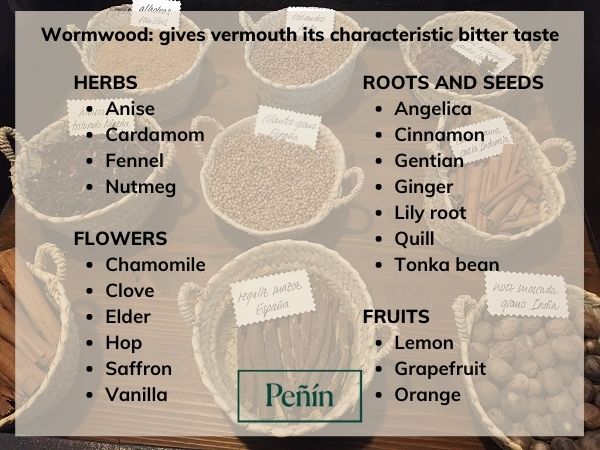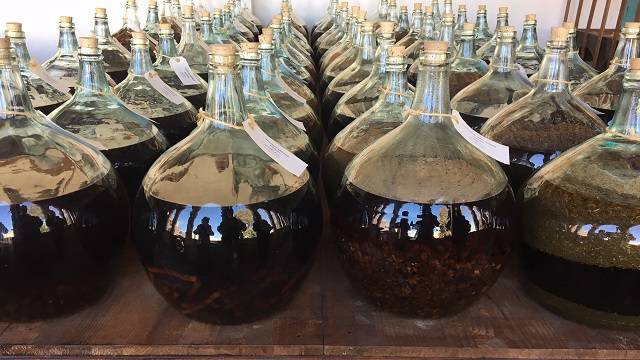The best vermouths in Spain
Some days ago, we talked about how is vermouth made, today we are bringing you the best vermouths tasted by the Peñín Guide.

Vermouth, as we know it today, was born in the 18th century in Turin (Italy). Its name, however, is of German origin: it derives from the word wermuth, which means wormwood, the plant that gives it its characteristic bitter taste. It is based on wine but is actually a wine-based drink that is macerated or infused with herbs, roots, flowers, seeds and other spices. It is very popular in Spanish, Italian and French cultures.
-Wine: is the base ingredient, usually white.
- Botanicals: These are key to giving it its unmistakable flavour and are used to macerate or infuse the wine: wormwood is essential whilst other herbs, seeds, roots or flowers can be added in different proportions, sometimes fresh and sometimes dried.

- Water: sometimes, instead of macerating the wine directly, water is used to add the botanicals.
- Alcohol: this is added to the previous ingredient -water- to obtain a mixture with an alcohol content of between 45-50º, using different types of alcohol such as brandy or marc.
- Sugar, caramel or honey: these are normally used to sweeten the mixture or to give it a touch of colour.
Step 1: Prepare the mixture of botanicals - the proportion must be the right one to achieve a balance and so that it is neither too sweet nor too bitter.
Step 2: either macerate the chosen base wine - usually a white wine - with the botanicals (for small quantities) or infuse the flavouring ingredients in a hydroalcoholic solution - i. e. water with the addition of alcohol - (this procedure is more common for larger quantities). These processes can be carried out hot or cold, leaving the botanicals to act for days or weeks, depending on the extraction the producer wishes to obtain.
Step 3: After maceration the wine is filtered. In the case of infusion, the hydroalcoholic liquid is filtered to eliminate any impurities and mixed with a neutral white wine.
Step 4: The flavoured drink is sweetened with sugar, caramel or honey and left to settle before bottling.

If we differentiate vermouth by colour, there are currently three types on the market:
There are no fixed recommendations, but rather, they tend to be different depending on the country. In Spain, it is very common to serve it chilled with a splash of soda water and no further garnish or ice, it is very typical as an aperitif. In Italy, they recommend drinking it chilled with ice or a piece of lemon or orange peel. It is also often found mixed in cocktails, especially the drier vermouths. However you drink it, the important thing is that you are able to enjoy and appreciate it.
Some days ago, we talked about how is vermouth made, today we are bringing you the best vermouths tasted by the Peñín Guide.
Excitement and hope in the Marco de Jerez region over the creation of a new designation of origin for traditional wines, seeking to attract young consumers with a sustainable and quality approach, projected for Europe in 2025.
At Peñín we are already focusing on the 2025 Guide, which begins its tasting tour this January to reach October with the most complete Guide to Spanish wines in the world.